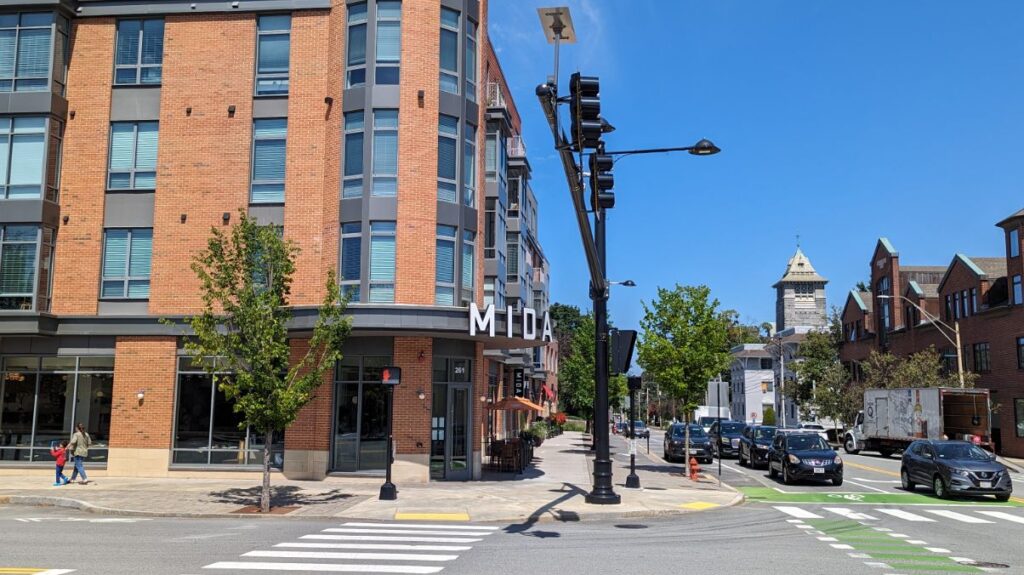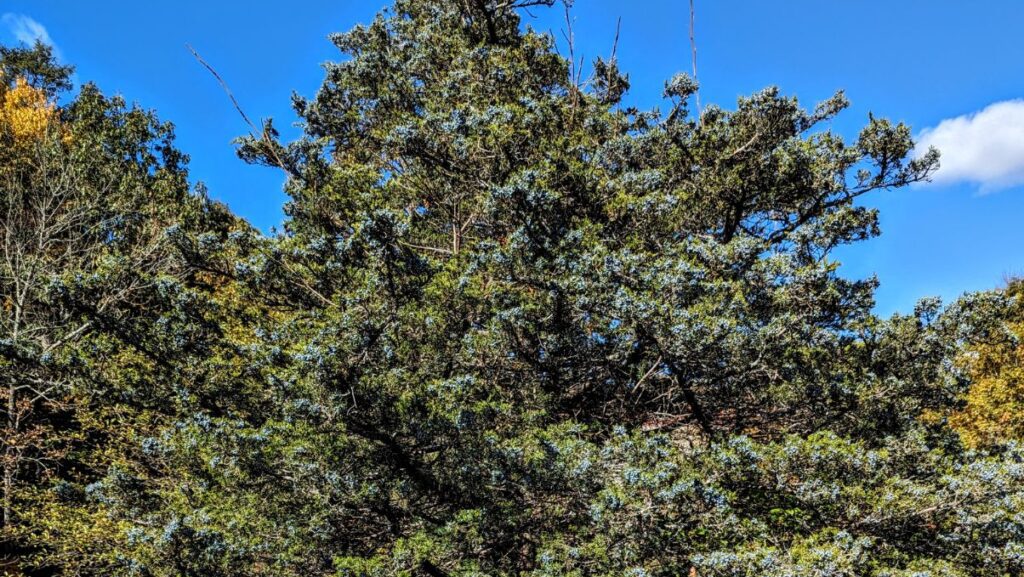Trees1
Newton's City Council has expanded its tree protection ordinance. Photo by Bryan McGonigle
Ralph Waldo Emerson—author, nature enthusiast and one-time Newton resident—once wrote, “The wonder is that we can see these trees and wonder more.”
Today, many in Newton are wondering where the trees went.
Newton’s City Council passed a measure on Dec. 18 that expands and toughens the city’s Tree Preservation Ordinance, first set in 1996, with the new changes set to impact more property owners as well as potential home renovations and other construction projects as the city struggles to offset decades of development and tree removal.
“We evolved the item from looking at lots—whether a lot is exempt or subject to the ordinance—and instead focused on whether trees are exempt or subject to the ordinance,” City Councilor Joshua Krintzman said as he introduced the measure for the vote.
So what’s in the new tree ordinance and what does it mean for property owners in Newton?
Roots of a problem
Protecting an area’s tree canopy has traditionally been a state role, but state law has focused on public land. Regulating tree removal on private property has been a relatively uncommon practice.
That is, until recently. As more and more land is developed, more and more trees have been lost, and communities are starting to take action.

Cambridge, for example, passed an ordinance in 2019 imposing a fine on property owners for removing trees of a certain height and maturity. Wellesley and Lexington have them, too.
Councilor Emily Norton said she and Councilor Julia Malakie started working on Newton’s tree ordinance overhaul nearly two years ago because more and more constituents were complaining about the loss of mature trees from private property.
“In fact, 56 percent of Newton’s tree canopy is on residential properties,” Norton said as she urged her colleagues to pass the ordinance. “So if we care about tree canopy, we have to care about trees on private property.”
Branching things out
Tree size is recorded in DBH, which stands for “diameter at breast height” and is found by measuring the tree’s diameter at 4.5 feet from the ground.
The new ordinance sets tiers for how trees of different sizes must be replaced. And “replaced”
doesn’t mean one new sapling to replace each adult tree. The ordinance ties replacement in with total inch count of trees removed, rather than making it a tree-for-tree exchange. Larger trees will have to be replaced by a greater number of smaller trees to match total inch count.
Here’s a rundown of the major components of the new ordinance:
- A property owner must attain a permit to remove any tree that has a DBH of six inches or more.
- Trees with a DBH between six and 25 inches must be replaced by a ratio of 1-to-1 (meaning one inch replacement per one inch removed).
- Trees with a DBH between 25 inches and 40 inches must be replaced at a ratio of 1.5 to 1 (meaning a property owner must plant 1.5 times the number of inches DBH of trees removed).
- Trees with a DBH between 40 and 55 inches must be replaced at a 2-to-1 ratio (meaning two inches must be replaced for every inch of trees removed).
- Trees with a DBH of more than 55 inches must be replaced at a ratio of 3-to-1 (three inches must be replaced for every inch of trees removed).
- Property owners must notify abutting neighbors when they get a tree removal permit.
- Property owners must provide a plan from a certified arborist showing how neighbors’ trees will be protected from the impacts of a tree removal.
- Property owners may opt to make a payment to the city’s Tree Replacement Fund instead of replacing trees.
- Property owners may apply for a tree removal permit or an exemption.
- Exemptions (for which there is no fee and no arborist plan is required for removal) are for dead and diseased trees as well as trees with a DBH of less than 40 inches on one- and -two-family lots unless construction is planned.
The replacement ratio changes with bigger trees because bigger mature trees do more for the environment than younger trees.
“It’s an acknowledgement that 40 inches is giving such a benefit that is very different than 20 two-inch trees,” Krintzman explained.
So if a property owner has a tree with a 50-inch DBH removed, they must plant 100 inches of DBH and that may be four 25-inch trees, ten 10-inch trees or any other combination that amounts to at least twice the 50 inches of tree they removed.
If the owner of a single- or two-family home wants to remove a tree and its DBH is less than 40 inches, they can do so without paying the removal fee. But that’s only if they don’t file a construction permit for the property for 24 months afterward.
If a that property owner then gets a construction permit before that 24 months is over, they will have to pay the tree removal fee retroactively.

Property owners will still have to get a permit to remove exempt trees, largely to let the city keep track of the total citywide tree canopy.
Newton Cemetery is permanently exempt from tree replacement.
“The ordinance does not prohibit you from taking a tree down,” Norton said. “It just says under certain circumstances you will have to replace the caliber inches or pay into some kind of fund.”
Out on a limb
Newton’s new tree ordinance isn’t as strict as the one in Cambridge, but Norton said it’s better than what the city had. She said she anticipated pushback over private property rights.
“We already restrict a lot of things that people can do on their private property related to the environment,” Norton said. “You cannot burn leaves on your own property. You cannot bury trash on your own property. You cannot dump motor oil into a stream running through your property.”
The existing tree ordinance, Norton continued, only applied to developers, and expanding it to apply to all property owners would enhance the environmental benefits of the policy.
“Trees clean the air. Trees cool the air. Literally, when your neighbor cuts down their tree, you will have to run your air conditioner more,” Norton continued. “Trees absorb stormwater, mitigating against flooding—very timely today. Trees reduce noise. Trees provide habitat for birds and wildlife, increasing biodiversity, which is currently plummeting. Trees sequester carbon dioxide, addressing climate change. Trees even provide mental health benefits. And the bigger the tree, the more benefits they provide.”
The forest for the trees
The City Council vote saw some resistance from both sides of the issue. Some felt it didn’t go far enough while others objected to how much it will affect homeowners.
“I can’t support an ordinance that doesn’t exempt invasive species,” Councilor Deb Crossley said. “Nor can I support an ordinance that tries to balance what the city wants to do with restoring its tree canopy on the backs of its residents.”
Homeowners would be hit with fines for converting their homes for adaptive re-use—something the city has pushed for owners to do instead of tearing down homes—including additions to fit more kids or renovations for accessibility.
“I work with homeowners who have simple projects and they’re trying just to make their house work for them and their families,” Crossley said.

On smaller lots, there isn’t much opportunity to expand a home. So trees are more likely to get in the way.
“And no matter what the [tree] species, tens of thousands of dollars are added to their ticket,” Crossley continued. “I can’t support that.”
Councilor Vicki Danberg echoed those sentiments and said she couldn’t support anything that adds financial burden to a family that has to expand their home for an unexpected family development, such as a disabled family member moving in, before the required 24-month wait.
“This is not a fee,” Danberg said. “You get something in return for a fee. This is a penalty. I don’t think you should pay a penalty for something like that happening.”
Several councilors acknowledged during the Dec. 18 debate that the ordinance will likely have to be amended in the future.